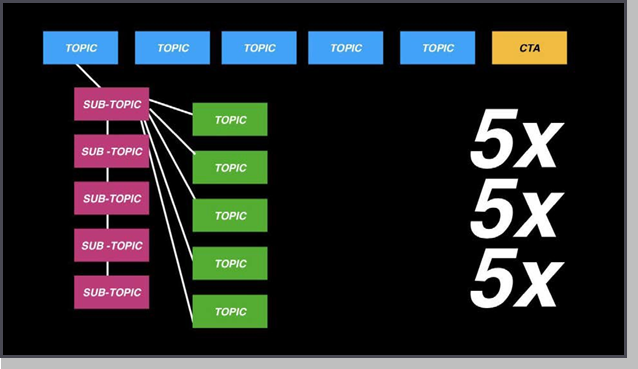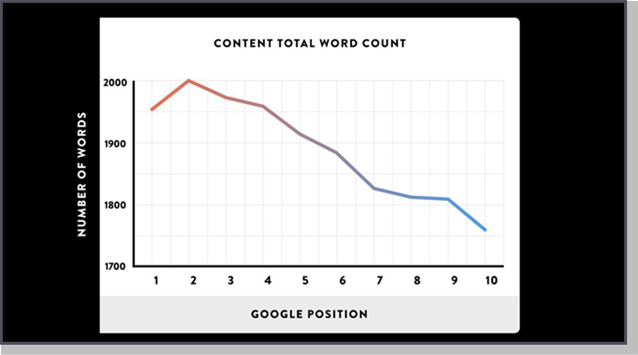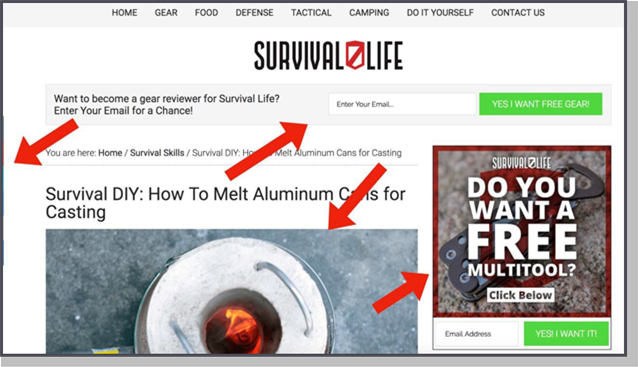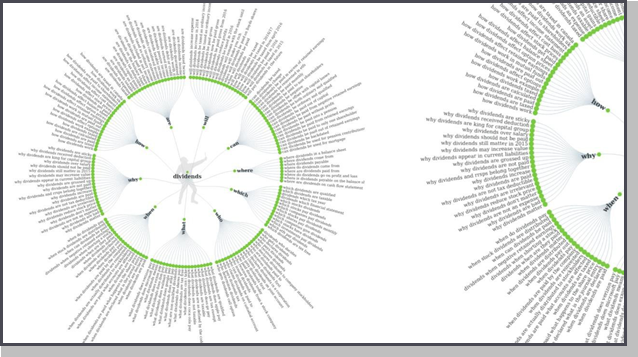Perry Belcher
Perry Belcher is an SEO expert, business marketing consultant, investor, importer, copywriter, internet entrepreneur, and Co-owner of DigitalMarketer. Perry specializes in all aspects of online marketing, and brings decades of startup company and investing experience that the experts can learn from.
Organic traffic is free traffic.
Increasing the amount of organic clicks that come through on your website is achieved through 9 strategic steps:
- More Speed
- Lean Structure
- Focused Research
- Organized Data
- Click Rates
- Rank Brain
- Voice Search
- Mobile First Index
- Content Links
Instead of reinventing the wheel, focus organic marketing efforts on what is already working. These 8 strategic steps to increasing organic clicks are based off of researching what is working for the majority of website owners and implementing those services into your website.
More Speed
Google loves speed and security. If your website is slow, no matter how great your content is, it won’t rank as well as a fast, high performance website. To get more speed, you can use third-party companies like WP Engine, which specialize in increasing the speed of WordPress websites. Increasing security cost $60 and switching your domain to an https domain versus an http domain. As Google strives to provide a fast and secure experience for its users, the websites that conform to their rules automatically get boosted in the search ranks.
Lean Structure
The lean structure of a website involves 3 elements:
- Hosting Service
- Framework
- Plugins
As the premier content management system in the world, WordPress naturally has the most developers. It’s the hosting service with the most website users in the world. This gives it an advantage in being the most advanced and flexible hosting platform with the most developed plugins.
Figuring out the lean structure of a website is the backend work of creating an impressive user experience. To see what competitive websites are using, or what the most popular content management systems are you can use the website builtwith.com.
WordPress dominates the CMS usage statistics, controlling over 50% of the top million sites on the web.
The next step in creating a successful lean structure is to choose a framework. The framework is the theme of the website, the blueprint that will be customized with logo, colors and images of the brand. What are the top 10,000 websites on the Internet using for their framework?
Genesis. WooCommerce follows second, used for ecommerce websites.
After hosting and framework comes the customization of the website. This customization is created with plugins. Plugins are fancy widgets that are ‘plugged’ into WordPress to make it do things that the website doesn’t naturally do.
The number one plugin for WordPress is Yoast SEO. Yoast SEO has a lot of features, allowing you to look at content and fix SEO errors before publishing. Jetpack, is a plugin that helps our website run faster. A full 25% of all websites on the Internet are using Yoast SEO and Jetpack.
What hosting service, framework and plugin are working for the majority of other websites on the web?
Don’t reinvent the wheel. Instead take the same wheel and brand it by painting your brand colors and writing your tagline on the spokes.
Focused Research
The goal of focused research is to show your audience exactly what they’re looking for when they click on your website link. If they’re looking for donuts in Anaheim, then the title of your blog post shouldn’t be “15 Places in Anaheim with Great Donuts.” The title should be “Donuts in Anaheim.”
Google wants to deliver the fastest, most accurate results to the searcher possible. They’re going to look for the most obvious answer and if you can show Google the most obvious answer, you’ll win the ranking game.
In order to find exactly what people are looking for there are a number of tools to use. Word Tracker is an old-school tool that shows you exactly how people are searching the Internet. For example, fashiontrends.com sounds
like the prime domain name for a fashion website. Yet after researching on Word Tracker, cuteoutfits.com had seven times more traffic than fashiontrends.com.
Moz and BuzzSumo are similar platforms and will show you what’s going on in the news, what the hot terms are in the news and what’s trending. Moz cost
$39 per month and BuzzSumo is $100 a month for access to these statistics.
The off-budget option is MarketMuse, which cost a couple thousand dollars a month. It’s built primarily for agencies and allows users to drag in content and have it be revised for improvements. It compares content to competitors in the market space and specifically what you can do to fix it.
The goal of focused research is to show your audience what they want to see
but also to make Google’s job as a search engine as convenient as possible.
Google’s mission is to organize the world’s information. If you help them do that, they’re going to promote your website. The key to becoming Google’s best friend is to help them make their job easier by following these two steps:
- Buy a two-word domain name. Most people don’t look up “make up,” they look up “make-up tutorials.” This means that makeuptutorials.com beats out makeup.com in almost every search.
- Create obvious navigation. If you create a huge navigation with 50 tabs across the top, Google isn’t going to be a fan of your website. Google wants navigation across the top of your website to have five primary topics and a call to action all the way to the right. From there, you’ll have the subtopics and the subtopics within the sub topics.
Focused research is partly for the audience and partly for Google. Strategize content based around what your audience wants to see and then optimize
it to ensure Google can understand that this is what your audience wants to see.
Click Rate
Another way Google will determine if your content is worth showing a search engine user is by the amount of clicks it receives. How many people looking at the listing click on yours versus the competitors?
Normally, the first result gets about 36% traffic and the second 18%. If you’re
able to increase these numbers, guess what Google will do? Move you up.
There are small hacks you can perform on your content to increase the chances of the link being clicked. For example, a blog titled “How To Start A Nail Salon Business” has potential to perform well. A blog titled, “How To Start A Nail Salon Business [Updated 2018]” performs better.
The same technique can be applied to images, as images are a powerful content seller. For example, “How To Start A Nail Salon Business [With Images]” out performs the initial, “How To Start A Nail Salon.”
Create high quality, well-structured blog posts to increase click rate.
Rank Brain
Google’s ranking process is a fully functioning brain. It became complex when an employee named Panda helped them crunch their data better than they could have crunched before. Using these questions, Google determined the behavior of each person on a webpage and then ranked the page based on quality, usability and the user experience.
The key to keeping a viewer on a webpage is by ensuring they have enough content to read and look at. If you look at Google’s top ranking web pages, they all have one thing in common. They have a lot of content on them.
The number-one Google position is held by a webpage with 19,050 words. Number two has 2,000 words. All of the top five positions have one major commonality: length. The content has to remain interesting through text, videos and any other communication methods that engage the reader.
How do you increase scroll rate?
Place a compelling image at the top, but only show the top third or 50% of the image. This motivates readers to scroll and see the rest of the image and so tells Google your web page should rank for this web search.
Lorem ipsum dolor sit amet, consectetur adipiscing
Take popular video content from YouTube and place it on the webpage. Popular video content has already shown that interested viewers will watch this video. If these viewers watch one minute or more of a video, Google just ranked your web page as a viable answer for their search.
You just won the ranking game without creating content. Other factors known to affect ranking are:
- Length of time a user spends on a webpage
- How much they scroll on the page
- Clicking on external links
- Commenting on content
- Sharing content
- Length of content
Voice Search
In 2018, 28% of all searches were performed through voice, not text. The predictions for 2020 are 50% of all Internet searches will be voice searches.
How can you use voice search to gain organic clicks?
The competition for voice searches is low because the way people search with their voice is different than the way they search with their fingers. Voice searches are more detailed and are mostly question based in nature.
For example voice searches tend to resemble, “Who has the best pan pizza in Albuquerque?” This isn’t something people are text searching nor is it something pan pizza companies are optimizing for. When you optimize for these search terms, the competition is tiny.
Take popular video content from YouTube and place it on the webpage. Popular video content has already shown that interested viewers will watch this video. If these viewers watch one minute or more of a video, Google just ranked your web page as a viable answer for their search.
You just won the ranking game without creating content. Other factors known to affect ranking are:
- Length of time a user spends on a webpage
- How much they scroll on the page
- Clicking on external links
- Commenting on content
- Sharing content
- Length of content
Voice Search
In 2018, 28% of all searches were performed through voice, not text. The predictions for 2020 are 50% of all Internet searches will be voice searches.
How can you use voice search to gain organic clicks?
The competition for voice searches is low because the way people search with their voice is different than the way they search with their fingers. Voice searches are more detailed and are mostly question based in nature.
For example voice searches tend to resemble, “Who has the best pan pizza in Albuquerque?” This isn’t something people are text searching nor is it something pan pizza companies are optimizing for. When you optimize for these search terms, the competition is tiny.
Answer The Public is the BuzzSumo of voice searches. They take a search term and find the ways that people are asking questions about it. All the prepositions and the questions about that search term are displayed like this.
The time to take advantage of voice searches is now while the competition is still low.
Mobile-First Index
Google has a separate index for mobile search results versus desktop search results. Formatting web pages for desktop and mobile is essential to receive organic traffic on both devices.
Google offers a free mobile-friendly test to show you how a web page looks on a mobile device, the score of its formatting and specifically what to do to increase the score for optimization.
Content Links
Backlinking has stayed one of the most effective ways to drive organic traffic. For websites with more time than money, guest blogging is a way to increase traffic.
High-traffic websites are always hungry for more content. Reaching out with a free article in return for placing a backlink to the blog or webpage is free promotion. Alltalk.com is a hand-curated website of the best blogs in the world. Writing content for these blogs creates a clean link to the webpage and the blog will typically benefit.
For high-traffic websites, a majority of organic clicks come from social media. Platforms like Pinterest are the king of social links. It gives the best social backlinks and can drive the most traffic with the potential for 50 million views a month from boards. Pinterest offers the opportunity for other users to create backlinks, at no cost to the website.
Content links increase organic traffic by placing a link in front of a new audience. Most content linking can be done for free through guest blogs and shareable content.
Organic traffic is free traffic. Unpaid, unsponsored traffic that can double, trip or even 10x profits. The key to increasing organic traffic is in curating content specifically for your audience, optimization for Google and placing content in front of new audiences.
Avoid reinventing the wheel and follow the traffic strategies that are working
for the major power players on the Internet.
- www.digitalmarketer.com
- www.plattr.com
- www.wpengine.com
- www.builtwith.com
- www.wordtracker.com
- www.moz.com
- www.buzzsumo.com
- www.answerthepublic.com






